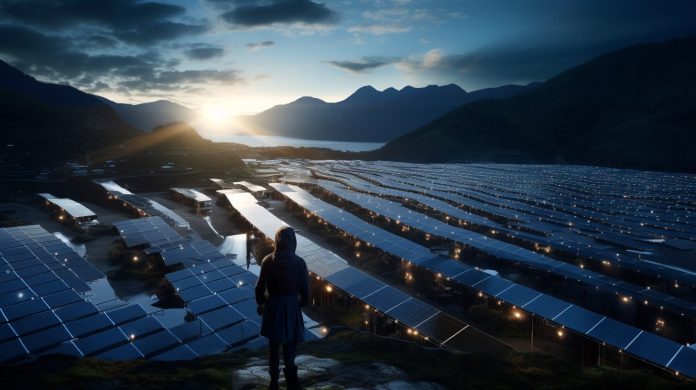Photovoltaic (PV) and concentrated solar power (CSP) technologies require direct exposure to sunlight for optimal efficiency. However, the accumulation of dust, lichen, bird droppings, and other debris on solar panels and mirrors can hinder their performance. Traditionally, cleaning is done using water tanks and pressure washing trucks, but this method is water-intensive and problematic in regions with limited water resources.
The issue of soiling is not limited to Earth. Mars rovers and landers have experienced malfunctions due to dust settling on their solar panels, and even the Moon’s lunar regolith poses a similar challenge. Dust and particulates can block the essential parts of the electromagnetic spectrum necessary for efficient solar power generation. Although suggestions for dust removal techniques like wipers and blowers have been proposed, scaling up these methods to clean millions of panels and mirrors on Earth poses significant engineering challenges.
Soiling, or the accumulation of particulate matter, is caused by various mechanisms such as wind and dust devils on Earth and Mars. Lichen, in particular, poses a significant problem in (semi-)tropical and moderate climates, while mineral dust is a prevalent issue in desert regions, where solar farms are most efficient.
Efforts have been made to repel dust using electrostatic effects, but finding a method to keep solar-powered robots on Mars and solar farms on Earth clean and efficient remains a challenge. Coatings that inhibit the growth of pioneer species like lichen have been developed, but cleaning affected surfaces or utilizing mechanical means to remove dust are still necessary.
The impact of dust accumulation on PV solar panels can be substantial. Studies have shown that panels in the Atacama Desert lost up to 39% of their output after a year of no cleaning. In regions with severe dust storms, panel output can decrease by as much as 50% after just a month. Regular cleaning with pressurized water jets is essential, although this method risks damaging the panels.
Researchers have proposed a solution involving the use of electrostatic charge induction to repel dust particles. By exposing the dust to an electrode, it becomes conductive and can be repelled when a contraption moves perpendicularly over the surface. Factors such as particle size and moisture content of the dust are crucial in the effectiveness of this method.
Finding an efficient, sustainable, and cost-effective solution for keeping solar panels clean is vital for maximizing their performance. Continued research and development in this field will contribute to the long-term viability of solar power generation on Earth and beyond.






